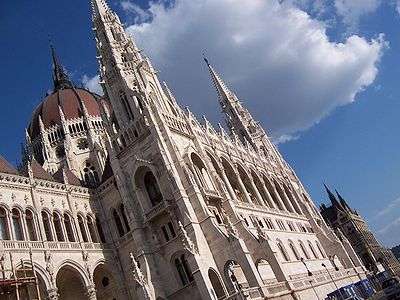| II | This is a Category II Language. |
Welcome to the Hungarian Wikibook, a free online textbook on the Hungarian language. Hungarian is spoken by roughly 14.5 million people in Hungary and elsewhere. It is spoken in Europe but is not an Indo-European language, and bears little resemblance to languages of the Indo-European family. It is classed as a Finno-Ugric language, its closest relatives being Finnish, Estonian and some similar languages spoken in the parts of Russia adjoining Finland and Estonia.
Hungarian is spoken in a lot of countries since the Treaty of Trianon redefined Hungary's borders in 1920 and because of the emigration that followed the outbreak of World War II and the Revolution of 1956:
 |
 |
 |
 |
| Hungary (10 m. speakers) | Romania (1.5 m. speakers) | Slovakia (500 000 speakers) | Serbia (300 000 speakers) |
 |
|||
| Ukraine (150 000 speakers) | 1 000 000 speakers in other countries | ||
(To those working to develop this page, let's collaborate on the discussion page)


Lessons
| The letters and sounds of Hungarian |
| Alphabetical order |
| Basic functions |
| Vowel harmony |
| Subject pronouns |
| Numbers |
| Words for everyday life |
| Interrogatives |
| Basic nouns |
| Basic adjectives |
| Substantive verb |
| Infinitive |
| Articles |
| Compound nouns |
| Simple verbs and conjugations |
| Yes-no questions |